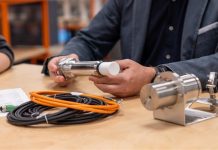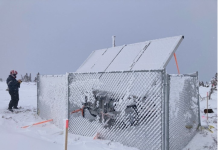Small wind electric systems are one of the most cost-effective, home-based renewable energy systems for your home with zero emissions and pollution. If you decide small wind is right for you, you will need to ensure that your wind turbines are tested and certified for safety, function, performance, and durability.
Why Turbines are Certified
If you are considering a small wind energy system, certification can give you greater confidence in the performance and safety of the system you install. Adoption of distributed wind systems has been hindered by untested technologies and unverified claims about turbine performance.
Certification and quality assurance requirements can help promote solid products and can be adopted by local planning officials, utilities, banks, state energy offices, and federal agencies to ensure consumer protection and industry credibility.
 How Turbines are Certified
How Turbines are Certified
As part of the effort to ensure quality, standards providing a set of design and engineering criteria to verify and assess performance are used to test wind turbines at facilities that provide site, equipment, and technical expertise. The Energy Department’s world-class National Wind Technology Center and its regional test centers, for example, are facilities that test and evaluate small wind turbines. An accredited third party, such as the Small Wind Certification Council or Intertek, then verifies test results and provides certificates to manufacturers.
Qualifying manufacturers are required to show that their wind turbines meet the requirements of the American Wind Energy Association (AWEA) or the International Electrotechnical Commission (IEC).
Tax Credit for Certified Wind Turbines
In January of this year, the U.S. Internal Revenue Service introduced new performance and quality requirements for small wind — a nameplate capacity of up to 100 kW. To qualify for the 30 percent federal Investment Tax Credit (ITC), you must install a fully certified wind turbine.
How to Qualify for the Tax Credit
The new requirements go into effect for small wind energy properties on the following dates:
 Effective Feb. 2, 2015:
Effective Feb. 2, 2015:
The most commonly installed turbines at homes — wind turbines with a rotor-swept area of 200 m2 or less — that have been acquired or placed in service on or after Feb. 2, 2015, are subject to the requirements.
Effective Dec. 31, 2015:
Larger wind turbines with a rotor-swept area of 200 m2 or more that are acquired or placed in service on or after Dec. 31, 2015, are subject to the requirements at that time to qualify for the ITC.
There are currently 13 fully certified small wind turbine models. The Energy Department is committed to increasing the number of certified small and medium wind turbine designs to 40 by 2020. To help make this happen, the Wind Program supports a Competitiveness Improvement Project (CIP) that helps U.S. manufacturers of small- and medium-sized turbines achieve certification and lower their cost of energy — building U.S. leadership in distributed wind markets.
To learn more about turbine certification in the U.S. market, check out this chart of certified small wind turbines maintained by the Interstate Renewable Energy Council (IREC). More information can be found on the DOE’s website or at IREC’s website where you can learn more about small wind and how it can benefit you and your community.
— Source: U.S. DOE



























